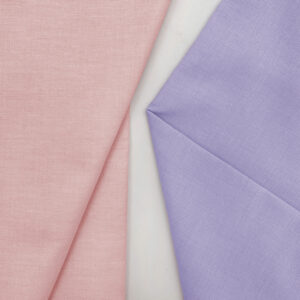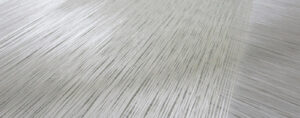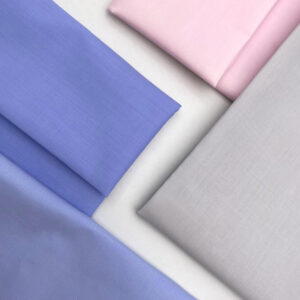Comparison of the various characteristics of chemical and synthetic fibres in garment fabrics
| Properties/Fiber | Polyester | Nylon | Acrylic | Vinylon | Polypropylene | Spandex | Chlorofiber | Rayon | Acetate | Tencel |
| Production Process | Polyethylene Terephthalate Fiber | Polyamide Fiber | Polyacrylonitrile Fiber | Polyvinyl Alcohol Fiber | Polypropylene Fiber | Polyurethane Fiber | Polyvinyl Chloride Fiber | Regenerated Cellulose | Acetate Fiber | Lyocell Fiber |
| Appearance & Feel | Imitates wool, linen, silk | Strong, elastic, durable | Synthetic wool, fluffy and soft | Bright white, soft like cotton | Lightweight, relatively warm | Highly elastic, soft | Plastic feel, rigid | Silky, soft, drapes well | Silky, luxurious | Silky, smooth, breathable |
| Abrasion Resistance | Good | Excellent | Good | Moderate | High | Good | Good | Moderate | Moderate | Moderate |
| Moisture Absorption | Poor | Good | Poor | Good | Almost none | Poor | Low | Moderate | Moderate | High |
| Heat Resistance | Excellent | Moderate | Good | Moderate | Moderate | Good | Moderate | Poor | Moderate | Good |
| Light Fastness | Good | Moderate | Good | Moderate | Moderate | Good | Moderate | Moderate | Moderate | Excellent |
| Application Areas | Clothing, decoration, industry | Socks, underwear, sportswear | Wool-like fabrics, underwear | Low-grade workwear, canvas | Socks, mosquito nets, medical | Elastic fabrics, sportswear | Underwear, blankets, industrial fabrics | Shirts, dresses, linings | Linings, eveningwear | Apparel, home textiles |
1. Polyester
Characteristics: polyester has high strength, wear-resistant, not easy to wrinkle and other characteristics, is the production of clothing fabrics ideal choice. Its fast drying after washing, good shape-keeping properties make polyester fabrics in the production of clothing with a “wash and wear” convenience.
Uses: Widely used in the production of apparel fabrics, manufacturing a variety of textiles, maintaining a dominant position in the garment fabrics.
2. Nylon
Characteristics: Nylon is the first choice for making durable clothing fabrics, as it has the highest abrasion resistance. Its good elasticity, moisture absorption and comfort, so that nylon fabrics in the underwear, sweatshirts and other apparel has a wide range of applications.
Uses: Mainly used in the production of underwear, sports shirts and other garment fabrics that require wear resistance and elasticity.
3. Acrylic
Characteristics: Acrylic because of its “synthetic wool” characteristics, suitable for making warmer clothing fabrics. Its excellent sunlight resistance and weather resistance make Acrylic fibre have unique advantages in the production of wool, wool and other clothing fabrics.
Uses: Mainly used in the production of winter clothing, such as wool, woolen thread and so on.
4. Viren
Characteristics: As a “synthetic cotton”, Vilene has good moisture absorption and is suitable for making lightweight and comfortable clothing fabrics. Its abrasion resistance and price advantage, so that the Velen has a wide range of applications in the production of low-grade work clothes and other apparel fabrics.
Uses: Blended with cotton, mainly used in the production of low-grade work clothes, canvas and so on.
5. Polypropylene
Characteristics: Polypropylene is the lightest fibre, suitable for making light clothing fabrics. Its fast-drying, quite cool characteristics, so that polypropylene fabrics in the production of summer clothing, outdoor clothing and other advantages.
Uses: Used to make summer clothing, outdoor clothing, socks and so on.
6. Spandex
Characteristics: Spandex, as the best elastic fibre, is the first choice for making tight-fitting and elastic clothing fabrics. Its comfortable to wear, acid, alkali, abrasive properties, making spandex in the underwear, sportswear and other fields have a wide range of applications.
Uses: Used for making tight-fitting underwear, sportswear, bandages, etc.
7. Rayon
Raw material: usually use natural cellulose as raw material, through chemical treatment and spinning processing.
Characteristics: with the appearance and feel of natural fibres, soft, good moisture absorption, suitable for making comfortable clothing.
Uses: Mainly used in fashion clothing and home textiles.
8. Acetate fibre
Raw material: mainly based on cellulose, made by acetic acid treatment and spinning.
Characteristics: It has the appearance of natural fibre, soft, good moisture absorption, suitable for summer clothing.
Uses: Commonly used in summer clothing and home textiles.
9. Tencel

Raw material: natural cellulose, made by special process, with silk-like luster and feel.
Characteristics: with the appearance of silk, lustre, soft, suitable for the production of high-grade women’s clothing.
Uses: Mainly used in the production of high-grade clothing, such as evening dresses, wedding dresses and so on.



